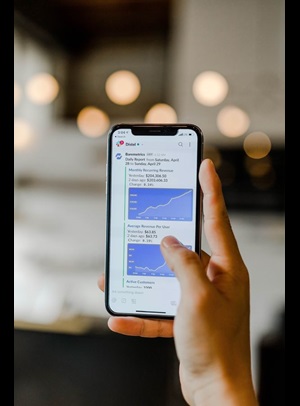Personalisation has become a crucial part in improving your customers experience, and in order to personalise your content, you need to understand your customers on a deeper level. This involves having a 360° view of them.
In the first of our four-part series on personalisation, we’ll talk about the best practices and tools you can use to build a 360° view and begin to understand your customers on a more personal level.
Why Does a 360° View of Your Customers Matter?
Having a 360° customer view means that you get a better understanding of who your customers are by making use of the information they give you every time they interact with your brand. It’s like having a crystal ball; you can see how they’ve engaged with you in the past, how they’re reaching out to you right now, and what steps they might take in the future.
The knowledge you gain from this view is incredibly valuable. When you can predict what your customers will do in the future, you can create a strategy so you can help turn those hunches into reality.
How Can You Build a 360° Customer View?
In order to build a 360° view of your customers, there are several practices you should be following:
- Go omnichannel
- Bring information into one place
- Combine data
- Quantify outcomes
- Use the right tools
Go Omnichannel
Are your customers able to engage with you across multiple platforms? If so, can you remember them from channel to channel?
That’s where omnichannel personalisation comes into play. Omnichannel personalisation is about designing a consistent, continuous personalised customer experience available through every touch point available to a potential or existing customer. Customers should be able to seamlessly switch from device to device without having to enter the same information multiple times.

Bring Information into One Place
Take a second to think about how many different systems you use at your organisation. The marketing team uses a CRM, the customer service team has its own database, and then the sales team also has its own tracking tool. When you have different sources of information, you might have duplicate data, which is pointless.
Instead, put information into one place. Your employees no longer need to update information in several places; they make one change, and a customer’s entire profile is updated accordingly. With all of those details in one place, you get a fuller, more accurate view of that individual.
Combine Data
Once you’ve brought all of your information into one place, it’s time to start piecing together information to get a fuller view of your customer. When you merge customer details together, you’ll see a more complete view of that person.
For example, you would be able to see that the same person who downloaded your white paper on automating processes went on to become a client of your consultancy. Combining your data gives you greater insight into all of the actions people are taking, and what those actions lead to in terms of results.
Quantify Outcomes
Let’s say a customer complains about you on social media. You need to collect that information, even if it doesn’t make you look very good.
This is because every interaction that a customer has with you, even if it’s negative, contributes to understanding more about that person. If someone is dissatisfied by his or her purchase, you might lose him or her as a customer. Then again, with a complete 360° customer view, you may realise that this customer is more costly than anything else.
Use the Right Tools
Using the right tools enables you put best practices into place. Today’s technology automates information gathering and makes it easier than ever to bring all of your information into one place, combine data, and quantify outcomes.
The combination of using Sitecore and your CRM allows greater insight into your customers, helping you to create that 360° view of them.
Sitecore and your CRM: Better Together
Sitecore and CRM enable content consistency, across national or global campaigns. CRM lets you segment campaigns, while Sitecore allows you to develop and automatically optimise content for each channel. This means that you create segmented and targeted campaigns at the most granular level. Sitecore stores the latest content in its CMS, and it’s cataloged for specific use cases.
Another way in which Sitecore and your CRM give you greater insight into your customer experience is through analytics. They provide you with detailed analytics about how your campaigns performed, and using that knowledge, you can tailor the your campaign so that it’s more successful. Additionally, you can analyse your personalisation and segmentation efforts. Maybe they’re not as fine-tuned as they could be? These tools can help adjust them so that you get the results you want.
Enlighten: Helping You Implement Sitecore
Enlighten is a proud Sitecore Gold Partner and has over 20 years of experience delivering outstanding experiences for our customers. To learn more about how to use Sitecore's User Experience platform to personalise your customers' experience, download the free User Experience Guidelines white paper today!

